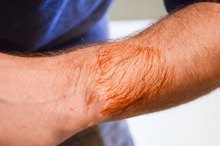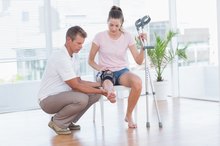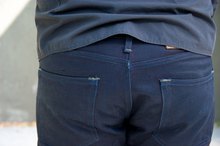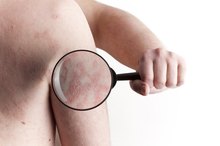What does fact checked mean?
At Healthfully, we strive to deliver objective content that is accurate and up-to-date. Our team periodically reviews articles in order to ensure content quality. The sources cited below consist of evidence from peer-reviewed journals, prominent medical organizations, academic associations, and government data.
- http://www.ncbi.nlm.nih.gov/pmc/articles/PMC3052193/
- http://www.ncbi.nlm.nih.gov/pmc/articles/PMC3052193/
The information contained on this site is for informational purposes only, and should not be used as a substitute for the advice of a professional health care provider. Please check with the appropriate physician regarding health questions and concerns. Although we strive to deliver accurate and up-to-date information, no guarantee to that effect is made.
How to Care for Skin After a Cast is Removed
Skin requires special treatment after a cast is removed. The skin will be sensitive to touch and muscles are weak due to the immobilization of the cast 1. Give your skin some special care to help it regain its original condition. Children Specialists of San Diego recommends avoiding rigorous activity for the same amount of time the cast was in place.
Wash the skin gently with mild soap and water. Do not scrub, rub or scratch skin, as it will be sensitive. Soak the area in warm water for 20 minutes twice a day if the skin was enclosed in a cast for more than three weeks. Understand the skin may have an odor--this is normal. The odor will disappear within a few days. The warm soak removes dead skin buildup--don't try to remove the dead skin all at once. It will slowly fall off over the next few days.
How to Remove Betadine Stains From Skin
Learn More
Dry the area by patting or gently rubbing with a clean towel. Apply a fragrance-free lotion to the skin to add moisture and increase skin healing.
Avoid shaving the skin area for three days, suggests The University of Wisconsin School of Medicine and Public Health.
Cracked, Peeling & Itchy Skin After a Cast
Learn More
Limit activity and elevate the extremity if swelling occurs. Muscles may have become weakened and stiff with no use. Apply ice as needed to decrease swelling.
Contact a medical professional if there are open sores where the cast was placed. Look for signs of infection including redness, abnormal swelling and a fever which is not relieved by acetaminophen.
Tips
- It is normal for function of the joints to be stiff and skin to be slightly discolored. Know that full range of motion and appearance will return slowly over time.
Related Articles
References
- Textbook of Basic Nursing; Caroline Bunker Rosdahl and Mary T. Kowalski (eds.)
- http://www.ncbi.nlm.nih.gov/pmc/articles/PMC3052193/
- http://www.uwhealth.org/healthfacts/orthopedics/4422.html
- https://books.google.com/books?id=hIq32ObcDZIC&printsec=frontcover&dq=orthopedic+nursing&hl=en&sa=X&ei=1fbCVNaBBYeyoQT-iIGQCg&ved=0CDcQ6AEwAQ#v=snippet&q=cast%20after%20care&f=false
- Cleveland Clinic. Casts & splints. Updated April 16, 2017.
Writer Bio
Julie Hampton has worked as a professional freelance writer since 1999 for various newspapers and websites including "The Florida Sun" and "Pensacola News Journal." She served in the U.S. Army as a combat medic and nurse for over six years and recently worked as the Community Relations Director for a health center. Hampton studied journalism and communications at the University of West Florida.








